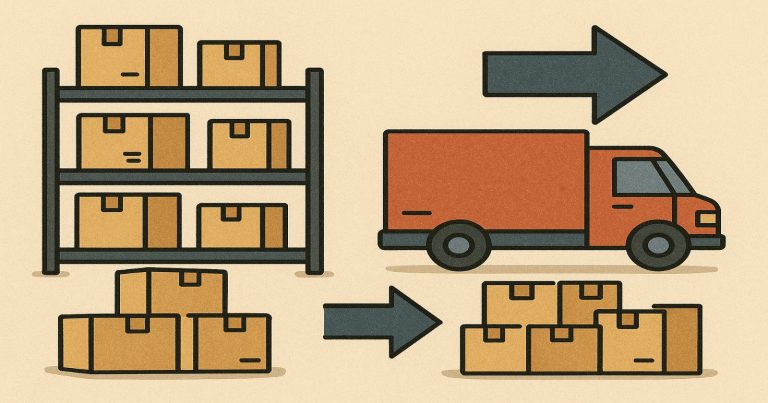Stock and supply are part of the jargon of economics as the fundamental concepts that determine how we think about the availability and flow of resources in the market. Although they’re often used interchangeably, they represent two very different ideas: stock is the total quantity of goods existing at any one time, whereas supply is the amount of those goods producers are willing to offer the market at a specified price over a given period. Knowledge of the difference between these terms forms a key insight into just how markets respond to demand, how prices are decided, and what is the overall stability of resources in the economy.
Difference Between Stock and Supply
The concepts of stock and supply are defined and differ in terms of their definitions as well as operations within any given market. Stock encompasses the amount of any product or resource that stands available at a point in time, whereas the concept of supply illustrates the amount of a given good offered into the market according to changes in demand and prices, among other variations, over a period of time.
| Aspect | Stock | Supply |
|---|---|---|
| Definition | Total quantity available in the economy at a fixed point | Quantity offered at specific prices within a timeframe |
| Market Impact | Represents potential availability | Represents actual availability for purchase |
| Time Reference | Fixed at a point in time | Highly dependent on the market price |
| Price Dependency | Independent of immediate market price | Generated as part of the market supply process |
| Source | Accumulated through production/storage | Generated as part of market supply process |
Stock Meaning
Stock refers to the aggregate quantity available in an economy or business at a particular point. Stocks include goods that are ready for sale or distribution and stored reserves. Thus, stock refers to the total potential distribution, sale, or use of resources, and it is a kind of static measure since it won’t change with day-to-day market fluctuations but reflects a company’s or an economy’s total possible supply.
Key Characteristics of Stock:
- Static Measurement: Stock is a snapshot measurement that shows the amount of how much is available at any one given point in time rather than continuously.
- Total availability: Stock includes all units of a product, whether they are ready for sale or held in reserve.
- Inventory control: For a business, stock management is definitely necessary because it ensures that the business manages to meet demand without incurring excess holding costs.
- Potential Market Impact: The stock level indirectly affects the market because it states how much supply may be available.
For example, a grocery store’s stock includes all products in storage and on shelves, representing what they could supply to consumers immediately or soon.
What is Supply?
Supply refers to the quantity of a product that producers are willing to sell at given price levels within a period. It’s dynamic, varying with price, demand, and other factors in the market. Supply is the opposite of stock; supply refers to an active component that keeps adjusting according to economic conditions and one would consider stock as the quantity present in the market. Hence, supply can directly impact what is available in the market as well as the price determination.
Key Characteristics of Supply:
- Price Sensitive: The supply levels would be altered with respect to changes in prices. Price rises mostly increase supply as a result of the fact that they ensure bigger profits.
- Demand Responsive Supply: It is often modified with regard to demand. High demand might force the manufacturers to increase their supplies, while low demand results in the reduction of supplies.
- Dynamic Fluctuation: Supplies tend to fluctuate over time as a response to changes in production, pricing, and market conditions.
- Dependent on Stock: While stock is present without supply, supply cannot be present without stock. Stock is the maximum possible supply. However, not all that stock is at times available at once.
In the example of the grocery store, supply would represent the goods they choose to put out on the shelves based on customer demand rather than the total goods they hold in stock.
Relationship Between Stock and Supply
The relationship of stock to supply is very important in the analysis of economics. After all, it sets the upper limit for potential supply. Supply goes only as high as stock exists, but not every stock existing will eventually turn out to be supply. Stocks are set aside because demand is low, the number of regulatory permits is limited, or there’s a strategic decision not to sell certain stocks in the company.
How Stock Affects Supply?
Stock is the underlying constituent of supply. Thereby acting to cap just how much stuff would be supplied in the market. The more stock, the quicker companies can supply more goods in times when demands are high.
Practical Implications:
- Stabilizing Prices: While the firms maintain higher stocks, it is unlikely that there will be sharp price jumps if demand tends to increase since the supplies can be enhanced to meet demand.
- Supply Chain Resilience: Stock acts as a cushion against discontinuous actions; corporations can continue to deliver the products even if production has to be stopped for some time.
- Controlling Market Supply: More stock in the corporations’ or government’s hands gives them more opportunities to control supply and have the market stabilized or avoid shortages.
How Supply Affects Stock?
Supply affects stock because it determines how fast the available stock is consumed. In case high supplies outstrip the rate at which stock is replenished, then stock levels will be low. Thus leading to a shortage if demand is high.
- Stock Depletion: Increased supply to meet up with high demand leads to depletion of stock, and in extreme cases depletion into scarcity.
- Market strategy: Because of efficient management of the stock level, the companies sometimes adjust their supply to the level where the profitability is maximized by suitable balancing of supply and stock.
- Operational Costs: The excess supply due to a high demand leads to rapid depletion of stock hence high production or sourcing costs because business firms may require to restock quickly.
In scenarios where demand surges unexpectedly, such as during peak shopping seasons, businesses may need to increase supply, leading to a significant reduction in stock. This often requires additional stock replenishment to avoid long-term shortages.
Difference Between Money Stock and Money Supply
Money stock and money supply are ideas that apply the use of the word stock and supply to currency in an economy. Money stock is the total amount of currency available, which means it involves cash as well as deposits, putting into representation the overall liquidity in an economy, but money supply applies to the portion of money stock that is actively used in transactions, whereby the difference comes in when applying monetary policy.
| Aspect | Money Stock | Money Supply |
|---|---|---|
| Definition | Total currency available in the economy | Currency actively circulated in transactions |
| Policy Impact | Influences broader economic indicators | Directly affected by monetary policies |
| Volatility | Generally stable | Can vary significantly with policy changes |
| Measurement | Includes cash and deposits | Primarily currency in active circulation |
In economic terms, money stock is said to represent all the potential currencies, while money supply is a fluid measure of currency available for transactions on hand. It is subjected to influences like policies of the central bank, changes in interest rates, and government regulations.
Difference between Stock and Supply FAQs
What is the key difference between stock and supply?
The main difference between stock and supply is that stock represents the total quantity of a good available, while supply is the amount of that stock offered to the market at a specific price within a certain period.
How does stock impact market stability?
Stock acts as a buffer, ensuring a steady supply of goods, which helps stabilize prices. When stock levels are high, sudden demand spikes are less likely to cause shortages or price inflation.
Can stock exist without supply?
Yes, stock can exist without supply. For instance, in cases where certain goods are held as reserves or where there’s no immediate market demand, the stock may remain unused, resulting in zero supply.
What is the difference between money stock and money supply?
Money stock is the total currency available, including all cash and deposits, while money supply is the portion actively used for transactions and varies with monetary policies.
Why are stock and supply important in business management?
Stock and supply are essential for managing market demand, ensuring consistent availability of products, and optimizing inventory levels. Careful management of both prevents shortages and helps maintain a stable pricing environment.


